│By Rebecca Bowden, Associate Acquisitions Editor, Gale Primary Sources│
Earlier this year Gale launched Voice and Vision, the second part of Women’s Studies Archive. The first part, Issues and Identities, traced the social, political and professional achievements of women throughout the nineteenth and twentieth centuries; central to the archive are the issues that have affected women’s lives, and the campaigns and activism undertaken by women, from suffrage to pacifism. Voice and Vision builds on the many narratives and topics covered in Issues and Identities partly by placing greater emphasis on sharing women’s own voices – much of the material is written by women, for women. Voice and Vision also expands upon the scope of the first module, challenging researchers to grow their understanding of central issues and explore new avenues of investigation in relation to women’s stories. But what does this mean in practice? How do the materials in Voice and Vision work alongside those available in Issues and Identities? What new possibilities does it bring to the table? In this blog post we use birth control to explore these questions and understand the different viewpoints and opportunities provided by Voice and Vision.
Early Campaigns for Birth Control in the United States
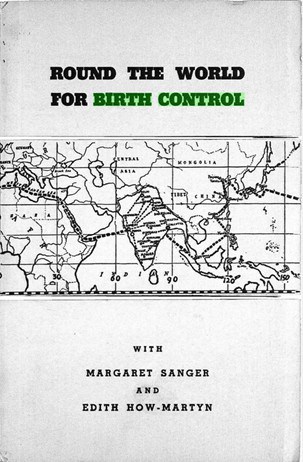
The history of birth control, which in the US is closely tied to the history of Planned Parenthood – the United States’ largest provider of reproductive health-care services – can be traced using the materials available in Issues and Identities, which includes the papers of Planned Parenthood itself. The first birth control clinic was opened in New York in October 1916 by Margaret Sanger to educate women about birth control, but was soon closed by police. Sanger nonetheless continued to campaign for reproductive rights throughout her life. Her work contributed to the gradual legalisation of birth control across the US (which happened in different states at different times). In 1948 Planned Parenthood funded research into a birth control pill, which was approved by the FDA (Food and Drug Administration) in 1960. After Sanger’s death, Planned Parenthood continued to campaign and advocate for women’s rights, alongside the renewed vigour of Second Wave Feminists who saw reproductive rights as a central part of equality. In the final years of the twentieth century, the FDA approved additional methods of contraception, including the implant, the patch and the Plan B emergency contraceptive.
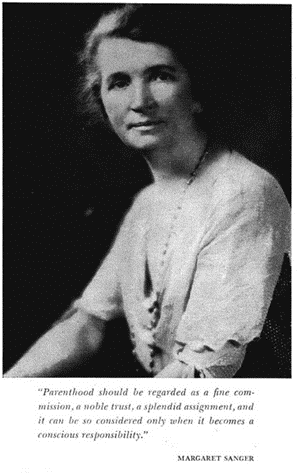
This history, which created increased control and opportunity for women, can be traced through Issues and Identities. While the outline given here was only brief, those looking for greater detail can uncover it first-hand with the primary sources available in the archive. Documents detailing the key milestones of Planned Parenthood, and monographs from the Margaret Sanger Research Bureau and the Birth Control International Information Centre are good places to start, and are bolstered by ephemera and manuscript material such as leaflets, flyers, petitions and correspondence. By looking at these all together, researchers can begin to understand this vital aspect of women’s rights history.

What does Voice and Vision add to this history?
If Issues and Identities does such a good job of detailing the history of birth control, what then could Voice and Vision possibly add, you might ask. The answer is: a lot! Take, for instance, this book, sourced from the American Antiquarian Society. Published in 1847, long before Sanger’s first clinic, The Married Woman’s Private Medical Companion is a guide for women on dealing with issues specific to being female, from menstruation to miscarriage. Interestingly, it dedicates two entire chapters to ‘Prevention to Conception’.
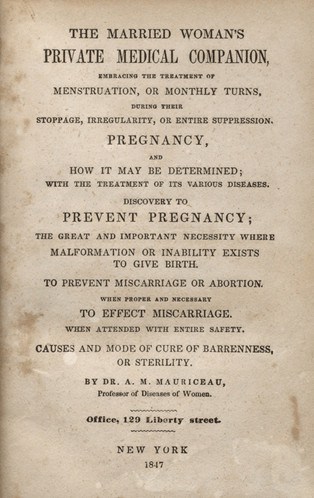
In the first, the author explores his belief that ‘every woman can have in her power the means of prevention’, and the chapter predominantly focuses on the role of birth control in protecting the health of the mother and limiting the transmission of genetic diseases. More interesting are the themes explored in the second chapter: here the author addresses the moral, social and physiological benefits of birth control. In contrast to what we would normally assume to be the norm in 1847, the author defends his conviction that the effect of birth control would be
“salutary, moral, civilizing; that it would prevent many crimes and more unhappiness; that it would lessen intemperance and profligacy; that it would polish the manners and improve moral feelings; that it would relieve the burden of the poor, and the cares of the rich; that it would essentially benefit the rising generation by enabling parents generally more carefully to educate, and more comfortably provide for, their offspring.”
Here the materials available in Voice and Vision build on those found in Issues and Identities by indicating that the interest in birth control was around long before the start of Planned Parenthood, and that it was being circulated in material aimed specifically at women.
Periodicals authored by women, for women
Another benefit of using Voice and Vision alongside Issues and Identities, is the ability to centre the narrative directly on female voices – not just understanding the issues facing women, but learning about them in women’s own words. In regard to birth control, this can here be seen through the use of periodicals. One example comes from The Woman Worker, the periodical of the Women’s Department Communist Party of Great Britain. The 1926 article ‘Too Many Children’ is a letter submitted to the periodical by a female reader, in which she states that birth control ‘is one of the most important things to working women – and their men-folk’ and that ‘if working women could get to know more of birth control there’d be more happy homes, healthier women and better children.’ The writer frames this not just as a health issue, but as a suffrage one, implying that it is the burden of childbearing and rearing multiple children that limits women’s ability to be involved in politics. Much of what is discussed echoes the sentiment of The Married Woman’s Private Medical Companion or the campaigns of Planned Parenthood, but here, rather than being described by a male author or an organisation, the speaker is herself a woman.
Women’s voices on both sides of the debate
Interestingly, women’s voices can be seen on both sides of the birth control debate. From The Catholic Citizen comes the article ‘Birth Control’, in which contraception is described as ‘a terribly insidious campaign against Christian morality’. Written by ‘a Catholic medical woman’, the article rallies against the establishment of a birth control clinic in the UK, and details the main reasons why readers should oppose contraception. In contrast to the article in The Woman Worker, which links women’s role in politics with their reproductive rights, here the two are deliberately shown to be separate entities – not only are women actively encouraged to vote on key issues such as this, but the author laments the fact that ‘in the day when women have just come into their own, politically, that a woman should be the principal mover in this Birth Control Campaign’. Both of these articles are found in periodicals directly aimed at a female audience and authored by women – they are key examples of women telling their stories in their own voices. And through those voices, the various facets of the debate around birth control that took place at the start of the twentieth century can be explored.
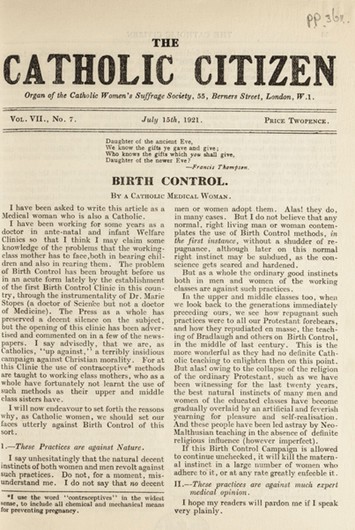
Female voices from minority communities help decolonise research
The material in Voice and Vision also allows us to explore the narrative of minority communities in relation to birth control, such as Hispanic communities. By examining the sources in the Comisión Femenil Mexicana Nacional Archives collection, we find an article on ‘Chicano Attitudes Towards Birth Control’.
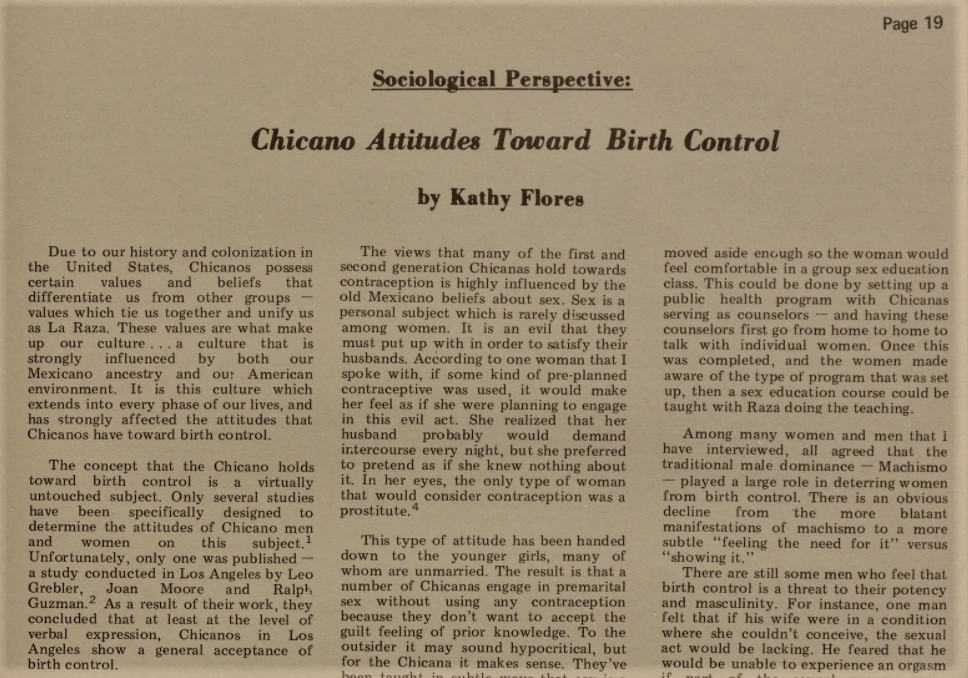
In contrast to the previous sources addressed here which focus on western, white views and attitudes towards contraception, here we can begin to understand how different cultural backgrounds can influence perception of such topics. The article tells us, for instance, that the view that Chicanas hold towards contraception ‘is highly influenced by the old Mexican beliefs about sex. Sex is a personal subject that is rarely discussed among women. It is an evil that they must put up with in order to satisfy their husbands… if some kind of pre-planned contraceptive was used, it would make her feel as if she were planning to engage in this evil act… In her eyes the only type of woman that would consider contraception was a prostitute’. This depiction, which is heavily tied up in the cultural background of the Chicano community, is a far cry from The Married Woman’s Private Medical Companion, which encouraged contraception to prevent married couples from having to live a Shaker-like existence!
However, the article itself is in favour of birth control. It details a number of other cultural factors that impact the Chicana attitude towards birth control – from the perceived threat to male masculinity to an unwillingness to challenge the traditionally passive role of the woman – before explaining potential methods that could be used to make contraception more culturally attractive. Only by exploring sources such as these can we begin to uncover the nuances of the true history of birth control, particularly in communities that have traditionally been overlooked when it comes to primary source material.
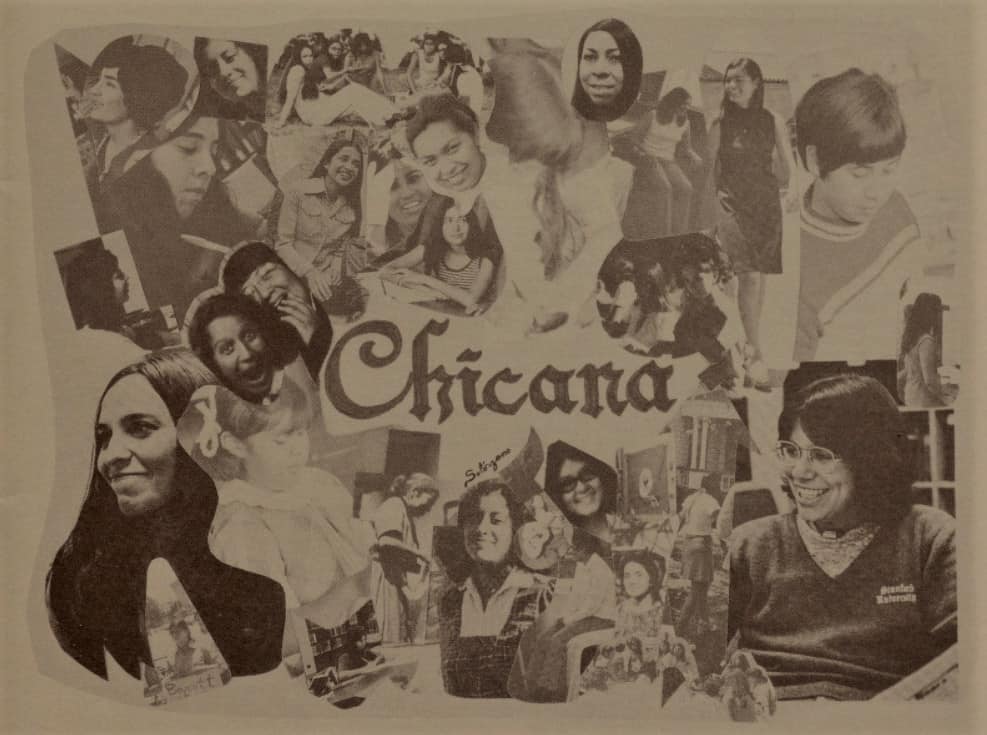
By using the materials available in Voice and Vision alongside those found in Issues and Identities, we can begin to build an even more thorough picture of the history birth control. From the long, important campaign undertaken by Planned Parenthood, to the attitudes of different cultures, to understanding the topic directly from the voices of women themselves, by researching both parts together, researchers can learn more and delve deeper into this important aspect of women’s history.
To read more about Women’s Studies Archive: Voice and Vision, check out Introducing ‘Women’s Studies Archive: Voice and Vision’. Or to read how Gale Primary Sources can be used to study topical issues around Gender Equality and Women’s Rights, check out: A Male Contraceptive Pill – could this bring greater gender equality? or A Woman’s Role? Why Feminism Is Still Very Much Necessary.
Blog post cover image citation: Birth Control pills. Photo by Simone van der Koelen (@simonevdk) on Unsplash.com https://unsplash.com/photos/lSYvRWrNR5U


